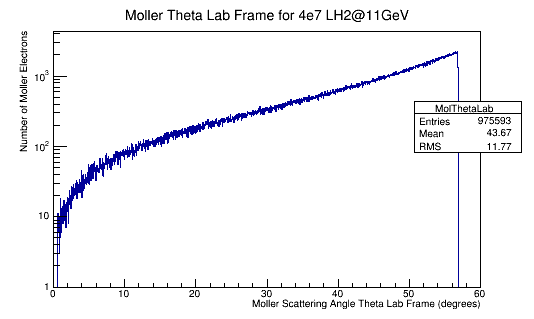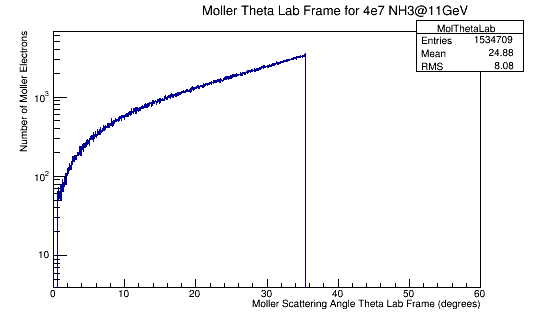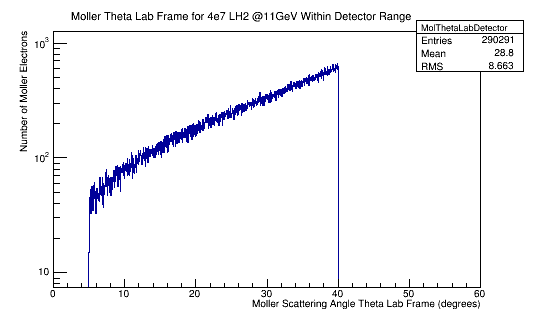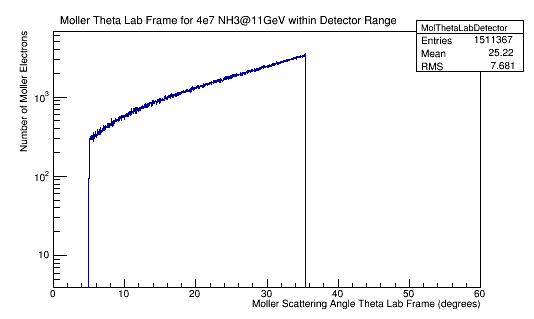GEANT Moller Simulations Comparison
https://wiki.iac.isu.edu/index.php/Converting_to_barns
https://wiki.iac.isu.edu/index.php/Check_Differential_Cross-Section
Converting the number of electrons scattered per angle theta to barns, we can use the relation
If the time is taken to be the same for the amount scattered as for the amount incident (the time simulated), this can be viewed as the probability of one incident electron producing a Moller event.
While this expression has no explicit dependancies on energy, the ratio is a function of the energy, as well as the physical makeup of the target.
This gives, for LH2:
From earlier simulations for random angle Phi, we know that the full range of Theta is limited depending on the target material.




For a Luminosity of
Comparison of GEANT Simulation to Whitney Data
| Simulation | GEANT4 | Whitney |
| Event Cross-Section (nb) | .61 | 0.079 |
| Moller Cross-Section (nb) | 0.58 | 0.075 |
| Length of Target (cm) | 1 | 5 |
| t_{simulated} (s) | 1.3E-5 | 9.54E-5 |
| N_{events} | 1026940 | 1001700 |
| N_{Moller} | 975593 | 951138 |
| N_{incident} | 4E7 | 6E7 |
Moller events occur for about 2.5% of the incident electrons on a LH2 target. We can assume the number of Moller events that occur within the DC range to be around 30% of the total Moller events occuring for the number of incident electrons for LH2 as well. Since the differential cross-section over the angel theta is proportional to the differtial cross-section over wire number we can dividing the Moller differential cross-section by the product of the density and length of the target material